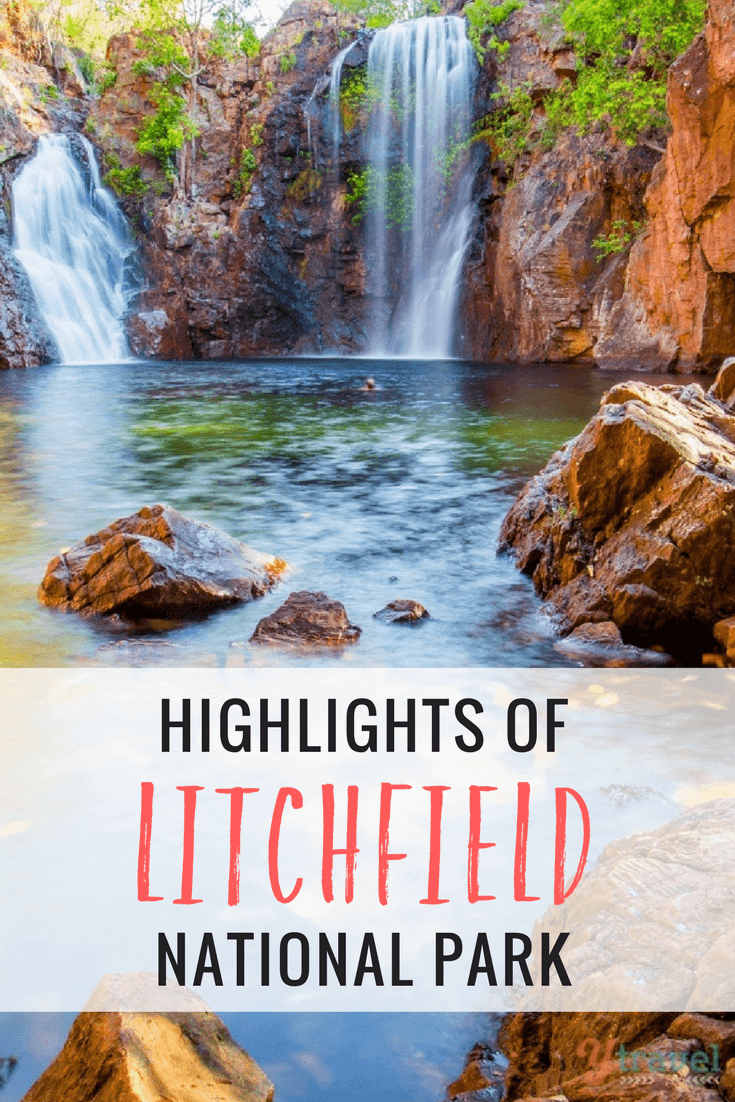This post may contain affiliate links. We may receive a small commission, at no cost to you, if you make a purchase. Read Disclosure.
Darwin locals are fortunate to be within relatively easy reach of some of my favourite national parks in Australia. In less than 90-minutes drive, you can be within some of the most outstanding nature spots with magnificent landscapes.
One national park that we absolutely love, is Litchfield National Park. The park is famous for its waterfalls and swimming holes, walking trails, and 4WD tracks.
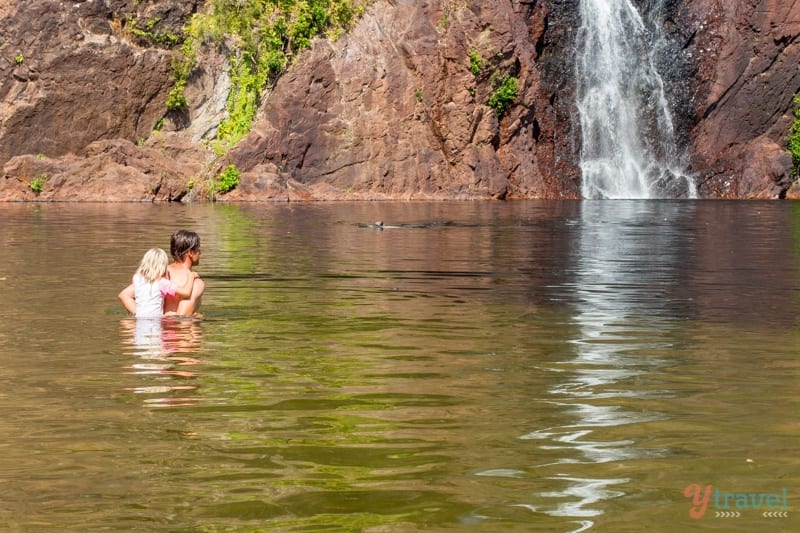
Most people visit the park on a day trip from Darwin, but if you have more time to spend exploring the park, you’re in luck, because there is a plethora of fun things to do in Litchfield National Park to keep you entertained.
Below are the top attractions in Litchfield National Park for any type of traveller…
- Is Litchfield National Park Worth Visiting?
- Things to Do in Litchfield National Park
- 1. Swim in the Buley Rockholes
- 2. Swim in Florence Falls Plunge Pool
- 3. Have A Picnic At Wangi Falls
- 4. Hike to Walker Creek
- 5. Check Out The Magnetic Termite Mounds
- 6. Watch the Sunset from the Tolmer Falls Viewing Platform
- 7. Go Four-Wheel Driving at Blyth Homestead
- 8. 4WD to Surprise Creek Falls
- 9. Learn About The Park's Traditional Owners at the Batchelor Museum
- Best Time To Visit Litchfield National Park
- Final Advice on Visiting Litchfield National Park
Is Litchfield National Park Worth Visiting?

It’s easy to see why Litchfield attracts 260,000 visitors each year; it boasts stunning tropical waterfalls and swimming holes, magnificent rainforests, giant magnetic termite mounds, an abundance of native wildlife, aboriginal historical sites, and many walking and 4WD tracks.
There’s a lot to see and do, as well as off-the-beaten-path adventures to have. It’s one of the best places in the Top End of Australia to go swimming, with waterfalls plunging off the edge of the escarpment into crystal-clear, safe swimming holes. And by safe, I mean salt-water crocodile free!
There are not many places in the Northern Territory where you can safely swim without fear of crocs, so for this reason, it’s 100% worth visiting.
If you have at least a week and you’re exploring the Top End of the Northern Territory, then I highly suggest a looped road trip from Darwin taking in Katherine Gorge, Kakadu National Park, and Litchfield National Park.
Want to see other national parks around Darwin? Then consider this five-day tour of Litchfield National Park and Kakadu National Park!
Things to Do in Litchfield National Park
Below are some of our favourite attractions in Litchfield National Park for any type of traveller. Whether you’re visiting alone, with friends, or as a family, these are some of the best things to do in Litchfield National Park…
1. Swim in the Buley Rockholes
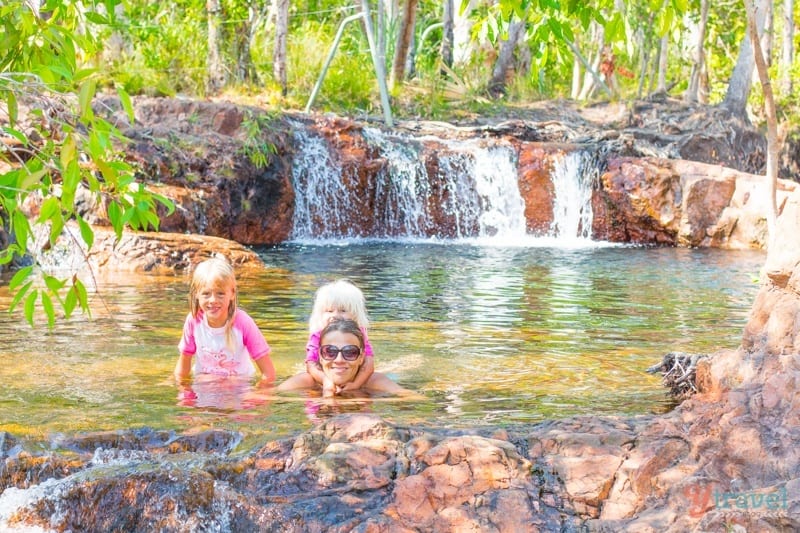
This was my favourite part of Litchfield National Park.
It was the perfect place to visit with our kids and we recommend getting there early to escape the tour buses and have the rock pool serenity to yourself.
The Buley Rockholes are a series of rocks with holes that have water cascading through them. Walk up to the top and take your pick of rock holes to sit in for a while.
Spend a few hours moving from one to the other. It’s hot enough to warrant it – even in the winter.


2. Swim in Florence Falls Plunge Pool
Florence Falls is a double-plunge waterfall leading to a popular swimming spot. There is a steep staircase down to the pools passing through a lovely viewing point, but it’s not too strenuous.
Otherwise, you can take the walk down to the falls from the car park via the Shady Creek track. We didn’t get to do it, but it’s meant to be very pretty.
And you can walk between Florence Falls and Buley Rockholes. The Litchfield waterfalls were simply amazing to see.
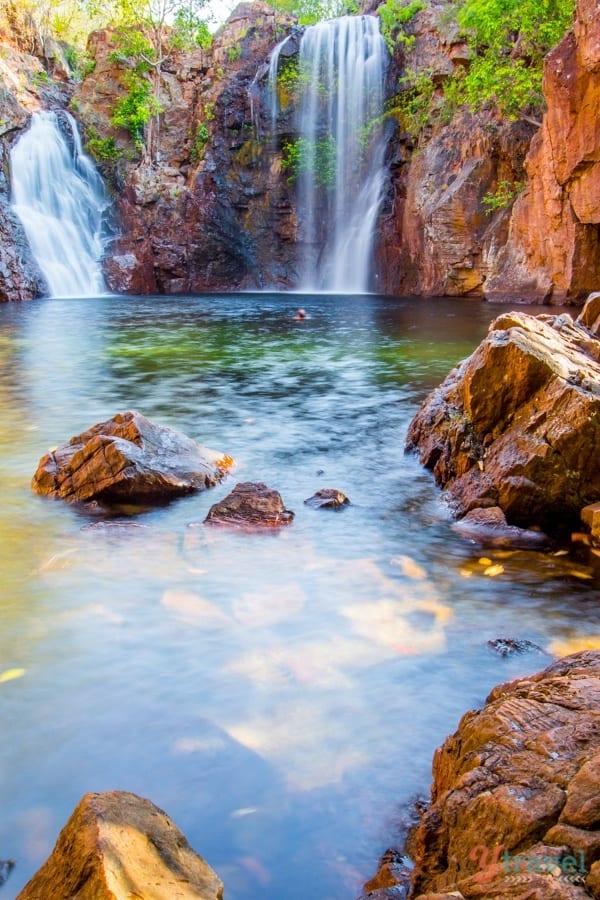

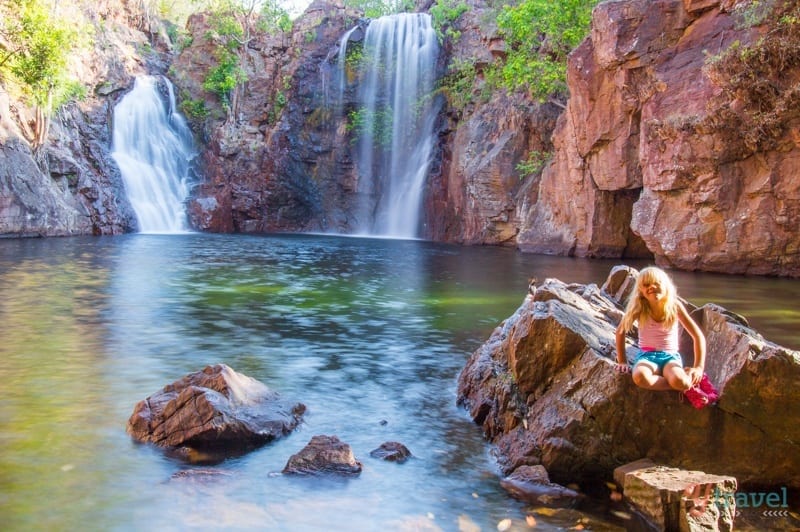
3. Have A Picnic At Wangi Falls
Wangi Falls is probably Litchfield’s most popular attraction with the largest swimming hole, picnic area, and onsite cafe – our kids enjoyed an ice cream here on a hot day, and it can be especially busy around lunchtime in peak season.

If you’ve got young kids like me, entering the waterhole is easier than at Florence Falls and it’s clear and shallow in close. Just be aware that it gets deeper and darker the further you swim out.
The Wangi Falls campground is a great place to stop for a night. There’s a BBQ area, and all the facilities you need for a comfortable night such as clean toilets and showers.
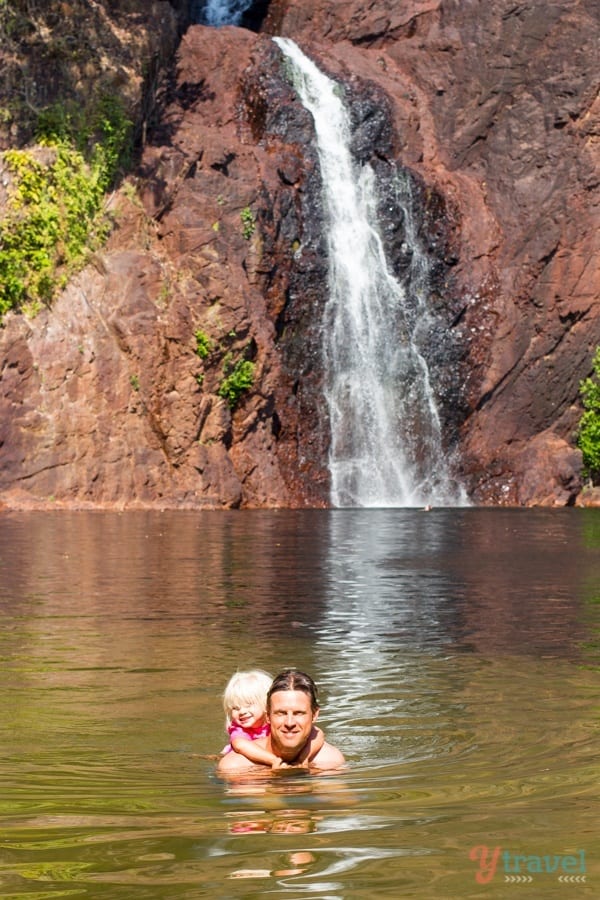
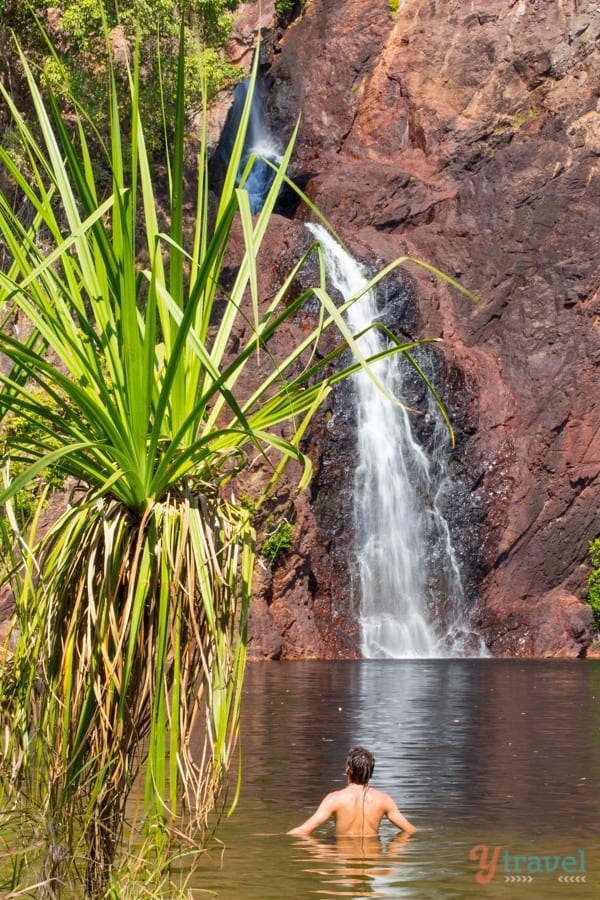
4. Hike to Walker Creek
If you want a swimming hole experience that is away from the crowds then take the 3km walk along Walker Creek to shared swimming hole number six. It was small, but just lovely to have all to ourselves and so refreshing after such a hot walk with two kids.

Along the walk, you’ll see various private campsites next to the creek with their own private swimming hole. Worth considering pitching a tent if you like bush camping. Number one was my pick.
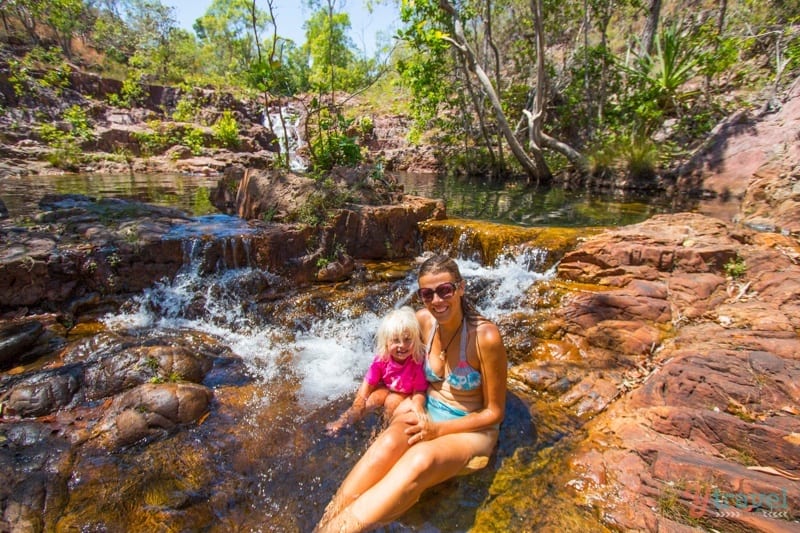
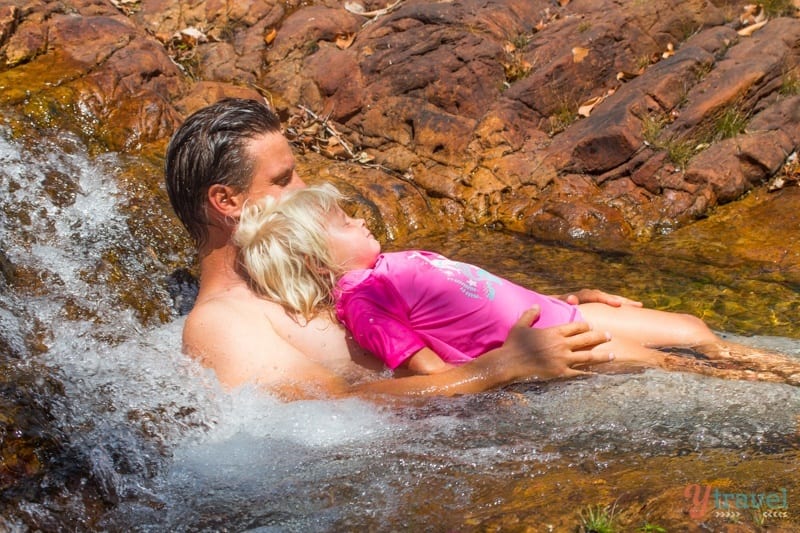
5. Check Out The Magnetic Termite Mounds
These termite mounds are incredible. Built by thousands of termites of different species, with a north-south orientation to control the temperature inside.
These magnetic insects have designed their home to minimize exposure to the sun. Amazing, right?
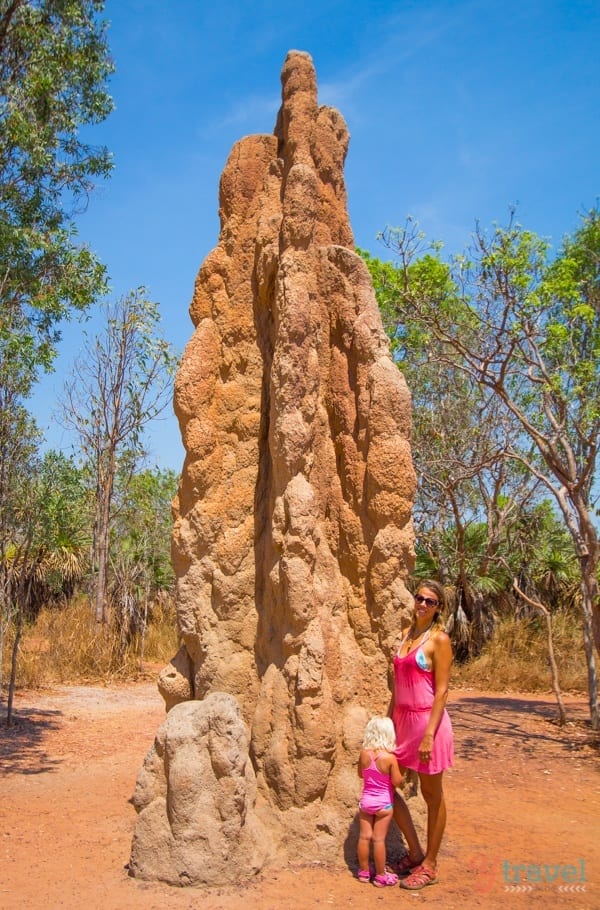
The mounds are more than 100 years old and stand up between two and four meters tall.
There is a boardwalk that takes you close to the mounds, the tallest and most impressive being the four-metre-high Cathedral Termite Mounds.
You will pass these termite mounds first if you enter the park from Darwin, we saved them for last on the way out.
6. Watch the Sunset from the Tolmer Falls Viewing Platform

Tolmer Falls is one of the most famous sites in Litchfield National Park. This huge waterfall has two large falls that fall into a deep plunge pool that you can swim in during the dry season.
It’s also one of the best places to visit in Litchfield National Park for sunset. Located just a short walk from the falls are two viewing platforms that overlook the waterfalls.
There’s also a 1.6km loop walk from the car park which takes you past Tolmer Creek, a tributary, and other rock pools (that you can’t swim in, unfortunately).
7. Go Four-Wheel Driving at Blyth Homestead
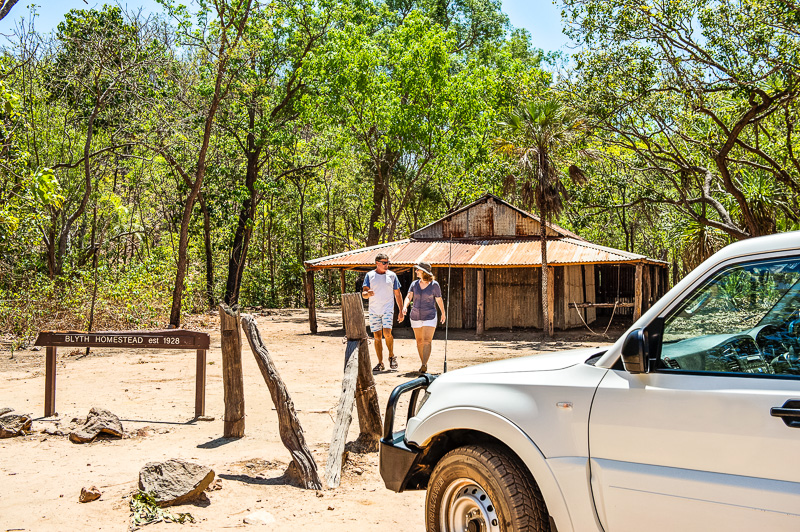
There are many 4WD tracks in Litchfield National Park, but one of the most popular is the track to Blyth Homestead.
Blyth Homestead is an old mining town that has been abandoned since the 1960s. It was built in 1928 when Litchfield was rich in tin. The area serves as a reminder of how challenging it is to set up a business in such dry and arid conditions.
You can learn about the former tin mining industry from the information boards at this abandoned site.
The area is usually inaccessible in the wet, tropical season of November to April due to the rain.
8. 4WD to Surprise Creek Falls
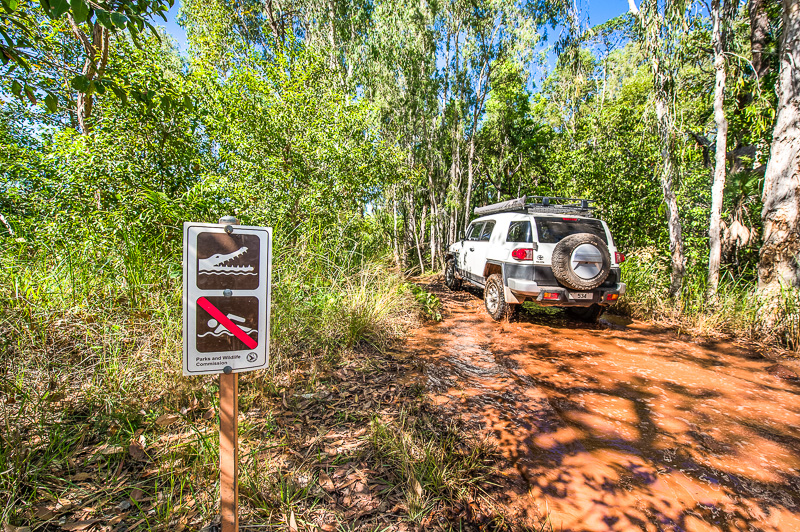
Another four-wheel drive track that you should add to your Litchfield itinerary is the Surprise Creek Falls track.
It’s a Grade 2 track, so not too difficult to drive up, but it’s definitely worth the bumpy terrain that meanders through monsoonal forests and opens up at a large swimming pool at the end.
9. Learn About The Park’s Traditional Owners at the Batchelor Museum
Litchfield National Park has been home to the aboriginal people for thousands of years. You can learn about the park’s traditional owners, the Mak Mak Marranunggu, Koongurrukun, Werat, and Warray people at the Batchelor Museum just outside the National Park.
The museum also offers a glimpse into the park’s mining history, Darwin’s importance during WWII, and agriculture in the area.
Best Time To Visit Litchfield National Park
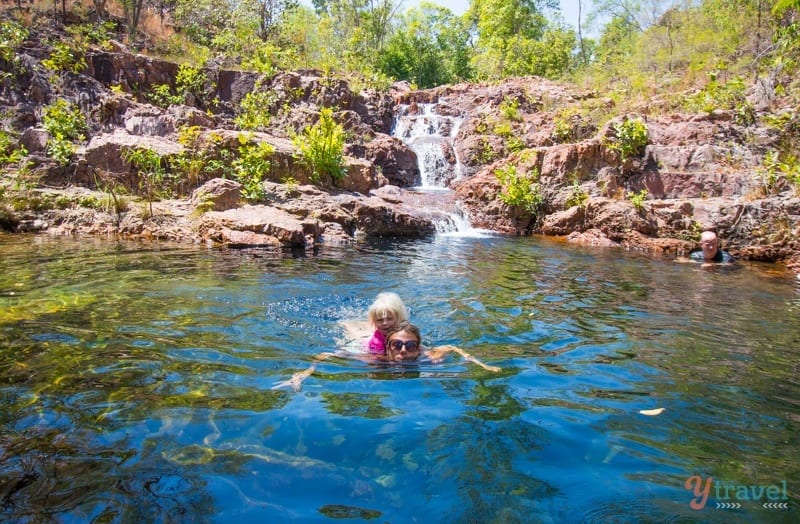
The best time to visit Litchfield National Park is during the dry season, which runs from May to October. This is when the weather is at its most pleasant and all roads are open.
However, if you do plan to visit during the wet season in November to April, you do get the benefit of seeing the waterfalls at their fullest and more magnificent.
If you plan to visit in the wet season, bear in mind many of the 4WD tracks will be closed this time of year. During the wet season, swimming is also not always permitted.
The park is open all year round, so no matter when you visit, you’ll witness something special.
Opening Hours and Entrance Fee
The park is open all year round and is free to enter. You only need to pay for camping, which is usually around $8 USD per person, per night. Though prices vary depending on where you camp.
Final Advice on Visiting Litchfield National Park
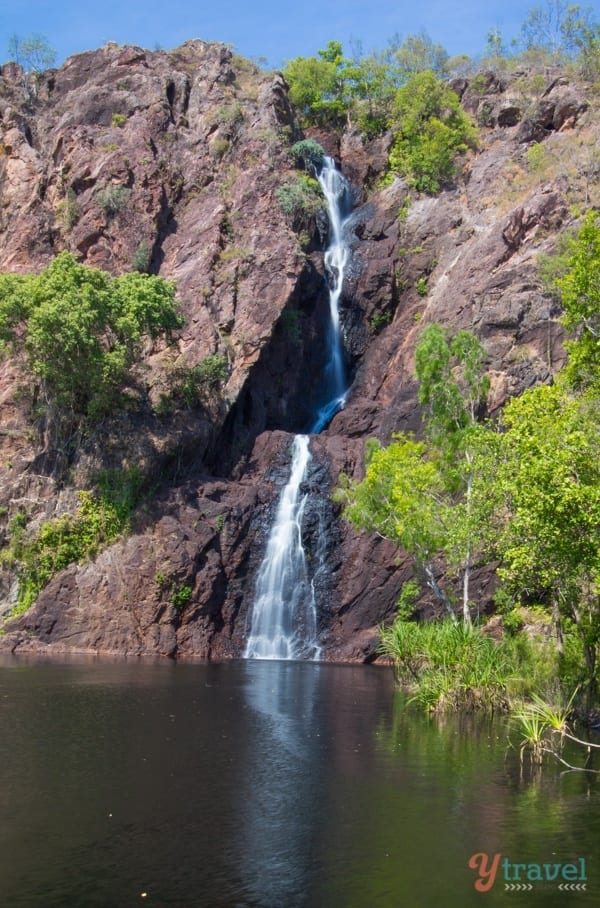
So there you have it, these are the best attractions in Litchfield National Park, and as you can see, there’s a lot to see and explore in its 1,500 square kilometres of incredible landscapes.
Before you go, we have just a few words of advice to help you make the most of your trip. First, if you are able to, hire a 4×4 vehicle. While much of the park is accessible with a standard vehicle, you can have an adventurous off-road experience to places such as The Lost City and Tjaynera Falls which is incredibly fun and a unique experience.
Finally, make sure you plan to visit on a weekday if possible. Litchfield is small enough to enjoy in a day, or big enough to explore over a weekend, but if you can, consider visiting midweek to avoid the weekend rush.
Whatever time of year you visit, make sure to pack a towel and insect repellent!
Save It On Pinterest:
